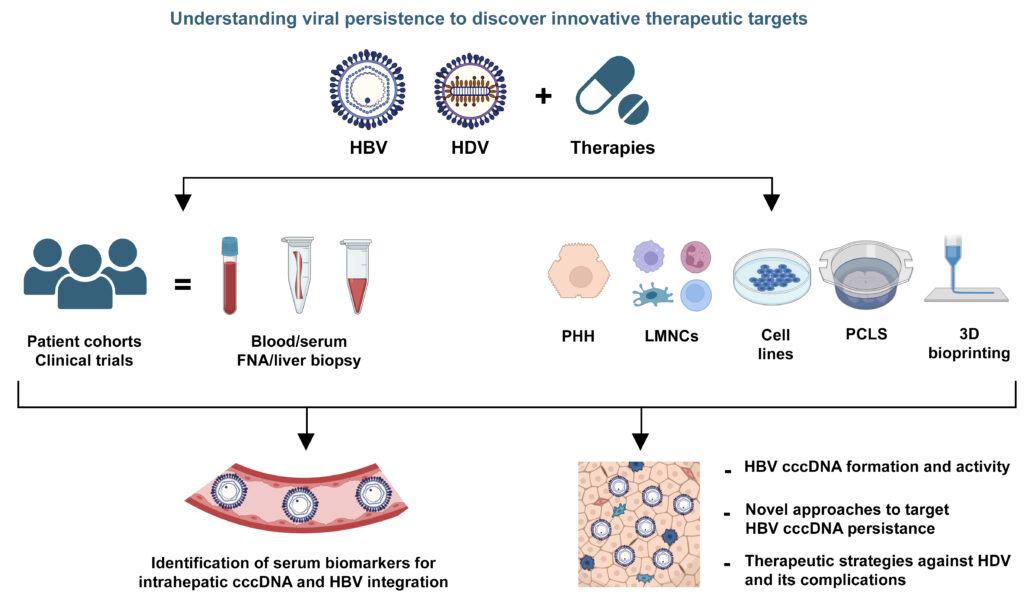Accueil » Viral Liver Disease
Viral liver disease is caused by a variety of viruses that lead to a range of health problems. There are five main types of hepatitis viruses, referred to as A, B, C, D and E. While they all cause liver disease, they differ in their modes of transmission, the severity of the illness cause, their geographical distribution and prevention methods. In particular, HBV leads to chronic disease in hundreds of millions of people and is the most common cause of liver cirrhosis, liver cancer and viral hepatitis-related deaths. Moreover, patients with HBV and HDV co-infection present the most severe form of disease due to a more rapid progression towards liver-related complications and death. Unfortunately, current treatment options are limited and remain beyond reach for most patients living with these viruses.

No results found.
Gut
Quantification of circulating HBV RNA expressed from intrahepatic cccDNA in untreated and NUC treated patients with chronic hepatitis B
Testoni et al.
JHEP Reports
Evaluation of the HBV liver reservoir with fine needle aspirates
Testoni B, Roca Suarez AA, Battisti A, Plissonnier M-L, Heil M, Fontanges T, Villeret F, Chouik Y, Levrero , Gill U, Kennedy P, Zoulim F
JHEP Reports
Early intrahepatic recurrence of HBV infection in liver transplant recipients despite antiviral prophylaxis
Villeret F, Lebosse F, Radenne S, Samuel D, Roche B, Mabrut J-Y, Leroy L, Pageaux G-P, Anty R, Thevenon S, Si Ahmed S, Hamilton A, Heil M, Scholtes S, Levrero M, Testoni B, Zoulim F
Institut d’hépatologie de Lyon, 2023